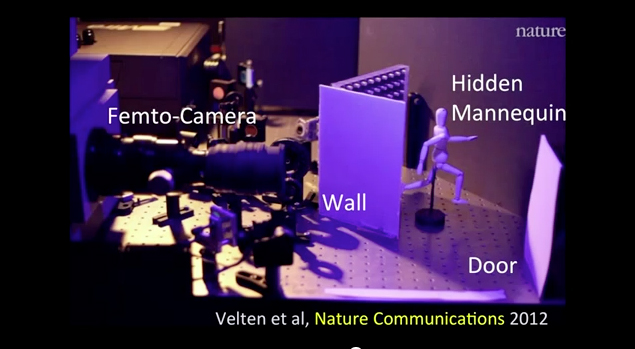MIT researcher Ramesh Raskar recently revealed the incredible technology to record videos at 1 trillion frames per second.
We’ve previously shared videos recorded at up to 10,000 frames per second using specialist cameras, but that seems to pale in comparison to the 1 trillion frames per second technology that scientists recently revealed.
In the TED talk below, MIT researcher Ramesh Raskar shares his team’s findings after they created a camera that can record at 1,000,000,000,000 frames per second. Now, that is a very large number, so to put it into perspective, this camera can actually record light as it moves! Think of watching a super slow-motion video of a bullet at speed, but instead of a bullet, this camera can record a small laser pulse traveling at 300 million meters per second. Incredible stuff!
The video below might be more interesting to photography gear-heads or those more technically inclined, but here are some other reasons we urge everyone to take a look:
- With femto-photography, as the creators have coined it, you can exploit the camera’s ability to detect the time between individual photons hitting the sensor to look around corners. It’s all very brainy stuff, but in other words, once this technology gets out of the lab, one way to use it would be to detect oncoming cars around an otherwise completely blind corner.
- In the example of a bullet vs light above, this camera’s clip of the laser pulse traveling across the frame lasts a couple of seconds, maybe half a minute. In comparison, a clip of a bullet crossing the frame would take a year to watch!
- Due to the extremely fast shutter speed required at 1 trillion frames per second, almost anything you record will be completely under exposed. Therefore, in order to produce the visible videos in the TED talk, they had to record each clip millions of times and overlay the footage. In the future, more sensitive image sensors will remove the need for this, and this tech could become standard in compact cameras.
It might not excite everyone, but trust us when we say it is truly mind-blowing technology in the making! Those looking to read more about the project can start at the MIT Camera Culture site.
Screenshots from the talk:










